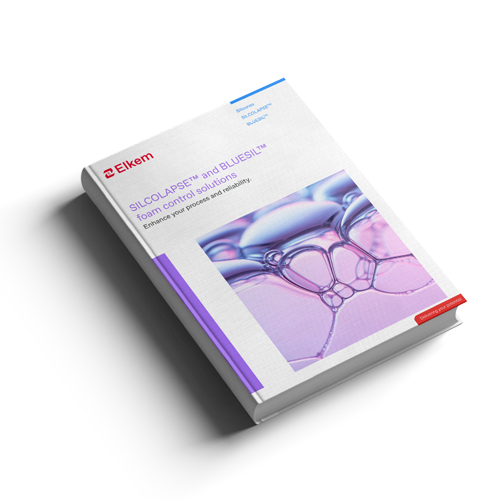- Magazine
- Energy & power
- The foam problem: a guide to the use of silicone-based foam control
The foam problem: a guide to the use of silicone-based foam control
Foaming occurs when tiny air bubbles collect on the surface of a liquid. It may sound harmless but, if left unchecked, foam can be a huge hindrance and a serious problem for a range of process industries, including oil and gas.
In the oil and gas sector, excessive amounts of foam can impact on the efficiency, reliability, and profitability of production. Firstly, the formation of foam bubbles significantly slows down a range of processes. One instance is drilling, where the use of surfactants as a drilling agent causes large amounts of foam. This can lead to costly slowdowns if uncontrolled.
Oil-gas separation is another process where the occurrence of foaming limits production. When a layer of foam forms on top of the oil, gas will be unable to escape efficiently. Large amounts of foam also restrict space inside the separator. If a container is too full, there is an increased risk of it overflowing – a serious environmental and safety hazard that operators often mitigate through the purchase of larger and more expensive processing equipment.
“Foaming occurs in most processes in the oil and gas industry, from the upstream to the downstream,” says Christine Leuci, Specialty Fluids Global Business Development Manager at Elkem Silicones, innovators of the SILCOLAPSE™ range of foam control products. According to Christine Leuci, the presence of this foam not only impacts productivity but also reduces the reliability and quality of production processes. “When you do well cementation, for example, you need to avoid the maximum amount of air getting into the concrete. If you have too many bubbles, the concrete will not have enough mechanical properties,” she explains.
Whether it occurs during drilling, separation, treatment or storage, foam clearly presents a big problem in oil and gas industries. To keep plants running as efficiently and effectively as possible, the problem of unwanted foam must be combatted through a well-chosen anti-foam agent.
Silicone-based foam control
The properties of silicone make it an ideal foam control solution. “Silicone foam-control agents have unique properties in terms of chemistry structure,” explains Christine Leuci. “They have a very low surface tension, which means they collapse the bubbles.” A high-performance silicone product can not only control and eliminate foam but also prevent it from occurring upstream. In this way, it can be used as an effective anti-foamer as well as a defoamer.
There are a number of advantages to using a silicone solution. Compared to organic-based options, silicone defoamers are more resistant to chemical corrosion and temperature variations. “The chemical backbone of silicone provides greater resistance to hard chemical conditions of temperature, pressure, and pH. That means you can use silicone even in processes carried out at 400°C, where you would not use an organic polymer,” says Christine Leuci.
Another key advantage, adds Christine Leuci, is that better performance can be achieved with significantly lower quantities. “The trend in many markets is to do better with less. There is a need to use less chemicals to save water, energy, and waste. Compared to organic products, you can add very low quantities of SILCOLAPSE™ to do the job,” says Christine Leuci.
